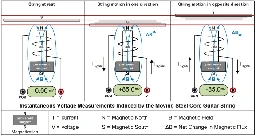
-
Why do Red Dwarfs have such frequent and powerful flares?
I love space, I have since I was a kid but I'm not a professional by any means. All my knowledge comes from years of watching documentaries, reading space/science magazines, and looking things up on wikipedia/stack exchange etc.
Red Dwarfs are thought to be the most common types of stars in the universe, but despite that they're generally thought to be a poor choice for life to evolve. From what I've read, this is because planets orbiting in the habitable zone are close enough to be most likely tidally locked, and on top of that, it's thought that Red Dwarf stars have powerful and frequent flares.
Red Dwarfs are thought to have even more powerful flares than our own Sun, despite being significantly less massive than our parent star. Why is this? What causes a star with a potential mass as low as 0.08 solar masses to have such powerful and frequent flares? Why do more massive stars not have comparatively more massive flares?
I've also read that TOI-700 is thought to be a fairly stable Red Dwarf, as in it doesn't seem to flare up the way a lot of other Red Dwarfs are thought to do. What are the possible causes for this discrepancy in flare activity among Red Dwarf stars? Why is it thought that Red Dwarfs are generally quite grumpy and emit a lot of powerful flares?
-
In regards to the Bose-Einstein Condensate, what could be the daily life, practical application of slowing down or freezing a photon?
This all seems as exotic or esoteric to us now as these invisible electromagnetic waves were to Heinrich Hertz, who reportedly regarded them as mere scientific curiosities with no practical applications.
Unable to foresee radio, television, telephones, remote controls, microwave ovens, Wifi, Bluetooth... you get the point, that "thing with no practical applications" is now a staple of daily life, and all around us. We have fully tamed Electromagnetism.
Now with things like Quantum Computing and Bose-Einstein Condensates, we are starting to tame a new esoteric scientific curiosity - the probability wave function, the Uncertainty Principle.
Heinrich Hertz did not foresee things like satellite television and Spotify while looking for a spark flying across two metal tips from his dark room in the 1880s, but surely we have a better grasp of what potential benefits the newest technologies have in store for humanity? Or are we for the most part still in the Hertz-like naive fiddling process?
Either way, there is going to be some incredible magic inside that quantum box!
-
How can i be sure i have a Stachys byzantina in my hands? What are the plants that look alike them, that i should be wary?


I'm gonna eat that motherfucker, so I need to be sure. Can birds, cats and dogs also eat them?
Edit: my cat sneaked into the room and ate a bit of a leaf, the same size I had tried myself yesterday. We dead, I'm typing from the afterlife. I tried uploading an actual photo of my plant but lemmy won't let me.
-
What is a salt and what is a bleach?
Obviously, I've heard of table salt (NaCl), but I've also heard of others substances being called salts. What do they mean by something being a salt?
There's the regular Clorox bleach that we use with whites, but then there is non-chlorine bleach. What is a bleach?
-
Can a Four-Year Degree in Any Hard Science Realistically Get You a Good Job?
I've long toyed with a mid-life pivot into a different field. Mostly, I lean towards IT as the most practical for me, but I love the idea of finally studying a hard science, which I grew to love, but never really got a good formal education in.
I've heard/read, for example, that there aren't necessarily tons of astrophysics jobs out there, so if you only have a bachelor's degree, you might have a tough time. I don't even know that this is true, but I use it as an example.
What are the hard science fields that would be the opposite of this? I could imagine there might be a lot of Chemistry-related jobs, for example, maybe? But I have a hard time imagining what you could do with a pure Physics degree (without also focusing on Engineering or something supplementary)? Would Biology get you anywhere by itself?
Or is it just the hard truth of all hard sciences that you're pretty much worthless with just a four-year degree, from a job perspective?
-
diy dendrochronology
I live in Vancouver Canada, my house was built in the 1950's and the basement has the floor joists of the kitchen [above it] exposed.
At that time forestry here was felling massive ancient trees. I'm curious how precisely I can establish a maximum age of the trees felled.
Obviously I could count the rings visible on the joists and subtract that number from 1950, but not having the tree's full diameter limits measurement. I understand it's possible to compare relative ring sizes with existing [cross referenced] data sets to date timber.
Does anyone have any experience doing this or able to point me in the right direction? Any resources I'm unlikely to find on Google?
-
Do hurricanes cool the ocean?
I understand that hurricanes get their strength from warm ocean water but do they take a measurable amount of heat from the water? ('Not going anywhere with this question, just wondering.)
-
What happens when you push a balloon full of air into a body of water, that's in space?
My 8-year-old son asked this question and i couldn't give him a definite answer. So he's wondering if it would do the same thing as a balloon pushed underwater in the bathtub (which kind of makes sense to me, due to the density differences, not just gravity alone).
But I told him I'd ask those more knowledgeable than me.
-
Can molten metals in space get shaped like glass on Earth?
What might prevent metal "blowing" and other forms of shaping from working if gravity was not a factor? Let's handwave-ignore the extremes of temperature as it relates to techniques and the present primitive space habitats and craft.
Is it possible to suspend a pool of molten metal, with a tube inside, spin while adding a gas to shape a container, and form more complex shapes through additional heat cycles in a repeatable process?
-
Is there a difference between drawing a random card, and mathematically generating a random card?
OK, I had a hard time coming up with a single sentence title, so please bear with me.
Let's assume I have a computer with a perfect random number generator. I want to draw from a (electronic) deck of cards that have been shuffled. I can see two distinct algorithms to accomplish this:
-
Fill a list with the 52 cards in random order, and then pull cards from the list in sequence. That is, defining the (random) sequence of cards before getting them. This is analogous to flipping over cards from a the top of a well-shuffled deck.
-
Generate a random card from the set that hasn't been selected yet. In other words, you don't keep track of what card is going to come up next, you do a random select each time.
Programattically I can see advantages to both systems, but I'm wondering if there's any mathematical or statistical difference between them.
-
-
Why does Toxoplasmosis Gondii bother infecting humans? What is its endgame with people?
I'm researching all of this, and it seems cats are the main(?) host for T. gondii. And yet it can infect humans as well. As far as I know, it does (sometimes) virtually nothing except either maybe give you schizophrenia or make you a "Risk-taking Asshole" for lack of a better term. What is even the purpose of doing this to infected humans??? WHY??? What kind of parasite infects a human with the only real side effect of "I'm just gonna make you gamble a lot and give you road rage."
Obviously there's other, more serious side effects. But I truly don't understand what its goals are once it comes into contact with humans. Are we just another body to them? A scenario of "Oh well im in this human now so... Guess I better get comfy or whatever."
Keep in mind I'm aware the Parasite isn't like a person, it doesn't just "do stuff" the way we humans do. It can't really think. My confusion stems from why it even bothers evolving just enough to be able to infect humans in the first place. Why doesn't it just stick with cats? And when it does infect humans, why does it just- not do anything half the time? It's like it only infects people Internally just to mildly inconvenience them.
-
How do I question the engineering physics of magnetic fields in a guitar pickup?
tl;dr don't bother. This is too abstracted and nuanced. That is okay to skip.
I like to understand the abstract scope of engineering. This is way beyond the simple surface level, with pics below to illustrate my point.
With electric guitar pickups, the complexity of field shaping and design control over the sensor seems like a place where optimising the profitable manufacturability of the final product remains the primary constraint with little deviation.
I struggle to qualify and quantify my intuitive hunch that there is a whole lot more potential to engineer something new and better within the realm of modern manufacturing. I don't know the principal questions I should ask or what might disprove my ideas from the get go.
- Most transformers shape the magnetic field far more than guitar pickups.
- a guitar pickup appears to be more of a two dimensional sensor that picks up the motion of a ferromagnetic string in the two primary directions of motion
- there are more complex harmonic motions present than a pickup can register in two dimensions
- the coil and slugs of a pickup are surrounded by a single large winding, yet the strings each have very different frequencies
- it is now possible to make a powdered ferrite core of nearly any shape and frequency
- the traditional pickup has little effective shaping of the magnetic field path
- guitar pickups are not optimised to a point where they are readily used elsewhere in other sensory applications and devices as economy of scale should dictate in an open and manipulation free market... I don't think they are anyways
- what might be the result if a 270° toroidal powdered core were designed and shaped for each string while tailoring the copper winding and ferrite for each string's mean frequency and shielding each of these
- would a chord segment gap in a toroidal core pick up more 3d motion from the string
- what effect would a primary and secondary winding wound in the opposite dot notation direction have on the pickup of more complex harmonics and motion
- why does none of this matter due to the filtering of LCR and the noise floor or other aspects
Like here is the basic range of commercial products:
The typical schematic of operation:
Basic construction:
This is a typically low noise toroidal transformer that has been around for ages:
Now I need you to abstract this concept with me a little bit. Imagine if a small toroidal core was below each string and offset towards the neck or bridge so that they will fit. Nothing would stick out or surround the string. The 270° is not a radius cut like a pie. Instead it is a chord and removed segment:
There are totally random pics from DDG that are somewhat illustrative in abstract:
These are just some random powdered core ferrites that illustrate how these can be formed into any shape now:
I usually avoid anything audiophile related because it draws out pseudo science nonsense like crazy, but at the center of this question is really a desire for a deeper understanding of sensors and magnetics that have much broader applications in precise motion control and sensors for a range of equipment.
In a higher level of abstraction, I'm also really asking when and where does this subject become the realm of the illusive bearded nude virgin demigods that get enslaved to corpo NDA masters from birth. .5/s
-
Do flies hate/dislike Yellow Watermelon?
I've noticed something interesting that I cant get an answer to online. Whenever I leave out watermelon in my house (After eating it of course. I cut slices from the melon so what gets left behind is the rind), it attracts lots of gnats and flies without failure. After cutting and eating a Yellow Watermelon for the first time and then leaving it out, There wasn't a single fly that cared for it, it was never swarmed or landed on or fed upon. it just sat there for a day or so before I finally threw it out.
Why is this?? Repeating this same scenario always gives me the same output. The flies aren't attracted to the Yellow Melon, Why?
-
Can a plant be reattached to itself after being cut?
I know animals can have limbs surgically replanted and still work. But can the same be said about plants? Could I cleanly cut down a tree, then stick it back on, and have it still grow into itself?
-
What kind of motor is in an adjustable mattress base, and how does it work
I couldn't find anywhere that would tell me what kind of motor is usually used there. And I don't know enough about motors to be like... well of course it's this kind... But once I know what it is... how does it work? Like different adjustable bases move different intervals for a single push of the remote button (at least according to my wife). So that got me thinking, what controls the minimum interval of difference between two positions the motor will support? I don't hear clicks, so I don't think it is a ratchet type thing which would have a clear min interval. Yet, if you unplug it, it doesn't just go flat. So there must be some sort of passive hold mechanism of some type...
-
Can you safely heat people with microwaves?
Sometimes, when I'm really cold, it can take over an hour to warm me up, even with a heating blanket. The quickest solution, a hot shower, feels really inefficient with all the heat going down the drain.
That got me thinking about microwaves. They heat food (partly) from the inside, contrary to simple infrared radiation.
Could we safely do that with people?
I found a Reddit thread where a non-lethal weapon and people getting eye damage because they stayed too long in front of a radar dish.
Could some sort of device be made that would warm specific areas (say, a hand or a leg) without endangering sensitive areas like the eyes?
Would it actually warm someone up from the inside? Would it be possible to make it safe?
Would it present advantages in cases of hypothermia, compared to heated IV fluids?
-
Does the Barnsley Fern have anything to do with actual ferns or is it just a fun coincidence?
I find fractals extremely fascinating and way, way, way out of my depth. One example being the Barnsley Fern, which I find so cool. It feels a bit like someone cracked a little piece of the Matrix code.
But is there anything really significant about the fact that it looks like a fern from a botanical/mathematical perspective? Do the two connect in any real way? Can we somehow find the math genetically or learn something about the mathematical properties of other leaves, for example? How "real" is it?
If I could make an oak leaf from fractals, would it advance mathematics and/or botany or would it be equivalent to creating a cartoon using Geogebra (nice to look at, but basically meaningless)?
-
Are there any individual cells that make decisions, or do they all react to their immediate environments according to chemical and mechanical laws?
In other words, is there any individual cell that can decide between two or more options, or all they all solely chemical and mechanical reactions without any self-determination at all?
-
Does all our energy on Earth come from the sun?
Like fossil fuels come from organic matter that grew because of the sun. Is there any form of energy on that cannot be traced back to the sun in some way?
-
When you see 'heat rising', what are you actually seeing?
Like the title says: when you see "heat rising" (the wavy/blurry area above a heat source), what are you actually seeing?
Bonus question: How does that cast a shadow? I noticed when I was opening my air fryer, I could see the shadow of the heat rising but, looking at the hot basket itself, couldn't see it.
-
Regarding the Fine Structure Constant in the spectral emission lines of a hydrogen atom, does the narrow gap/black line represent 1 out of 137 slices or possible steps of something?
In the color lines of a spectrograph and what seems to be an area with a certain color, zooming in shows that this color is delicately split in half by a black vertical hairline, on one side it's the emission of photons of color by a hydrogen atom with a spin up electron, on the other it seems to be the same color but it's a spin down electron.
Whenever I hear that gap mentioned, 1/137 is invoked, but I'm not sure precisely what that means, and I'm visualizing that the color of the spectral emission can be divided or deconstructed into a total of 137 vertical lines, and the one in the middle is black.
Maybe it represents 1/137 of a photon's wavelength at a certain color?
-
Has there ever been anything originally dismissed as pseudoscience that was later proven to be legit?
There is a tendency for real doctors with backing from Academia or whoever's in charge of deciding how you science to just plain getting it wrong and not realizing it for a long time.
Homeopathy is a good example of this, as it appeared to get great results when it was created during the Bubonic Plague and had such staying power to the point that in the 1800's it was considered a legitimate and mainstream field of medical practice.
Now today we know Homeopathy is nonsense... Remembers New Age Healing is still a thing Okay, those of us with sense know homeopathy is garbage. With the only reason it was getting such wonderful results was because the state of medicine for a long period of time in human history was so god awful that not getting any treatment at all was actually the smarter idea. Since Homeopathy is basically just "No medicine at all", that's exactly what was happening with its success.
Incidentally this is also why the Christian Science movement (Which was neither Christian nor Science) had so many people behind it, people were genuinely living longer from it because it required people to stop smoking at a time when no one knew smoking killed you.
Anyhow. With that in mind, I want to know if there's a case where the exact opposite happened.
Where Scientists got together on a subject, said "Wow, only an idiot would believe this. This clearly does not work, can not work, and is totally impossible."
Only for someone to turn around, throw down research proving that there was no pseudo in this proposed pseudoscience with their finest "Ya know I had to do it 'em" face.
The closest I can think of is how people believed that Germ Theory, the idea that tiny invisible creatures were making us all sick, were the ramblings of a mad man. But that was more a refusal to look at evidence, not having evidence that said "No" that was replaced by better evidence that said "Disregard that, the answer is actually Yes"
Can anyone who sciences for a living instead of merely reading science articles as a hobby and understanding basically only a quarter of them at best tell me if something like that has happened?
Thank you, have a nice day.
-
How do I know if tinnitus is some sort of a placebo effect?
What if I am just imagining the high pitch sound in my mind whenever I hear about or think of tinnitus just like how someone tells you to imagine a whale and you form a mental image of a whale? I don't pay attention to the noise while I'm busy doing stuff but once I think about it, it is as hard to stop noticing it similar to being told to breathe manually, and it gets very annoying after some time. Is it what tinnitus really is?
-
Question about astrology (kind of).


We've pretty much completely discounted astrology as having any meaningful impact on a person's personality. But what about the seasons of the year, and the weather that comes with them? The stars position in the sky are an indication of the seasons on earth. Right? Wouldn't a baby that is born into a world of sunshine and warmth have a different early development than one born into the cold and darkness of winter? Has any research been done on the impacts of a baby's environmental conditions on their personality?
-
What happens if I ambush an apex predator?
I know that lions can be scared away when they see humans approaching without fear, but what if they're ambushed? How about a tiger, or a polar bear? If I manage to sneak up on one of these apex predators, and jump out, screaming, and running at it, will it run? Or will it just turn around and kill me? I guess I'm wondering if apex predators have a fight or flight reflex, and how strong it is if they do. Do they tend to resort to fighting more often if they're the baddest tiger in the jungle vs the runt of the litter? Do they quickly assess the threat and respond accordingly, or does a flight instinct kick in and send them running?
-
Any scientific explanation to what happened to me ?
A few minutes ago I suddenly woke up , I didn't sleep well
At the beginning everything was normal , then I blinked and ...
The lighting suddenly became more yellow (and unnatural) and the closet I was looking at turned into a frightening and shocking appearance (the closet itself, it was vandalized in a way that I can't even remember to describe). I remained in shock for three or four seconds, then I found myself closing my eyes tightly ( it was an involuntary reaction ), and when I opened my eyes again, everything returned to normal.
This is the first time in my life that this has happened to me
So ... any scientific explanation?
Thanks in advance
-
Is there no electromagnetic force between the positively charged nucleus of an atom and the electrons?
Or in other words which forces keep electrons in orbitals and prevent it from flying away or crashing into the nucleus according to modern understanding?
-
Recent examples of Western Blots from Open Access Papers?
Could someone recommend examples of high-fidelity, best-practices Western Blots from Open Access Papers? I would like to use these examples to see what kind of distortions or corruption might occur to these images when they are reproduced or archived in various ways.
